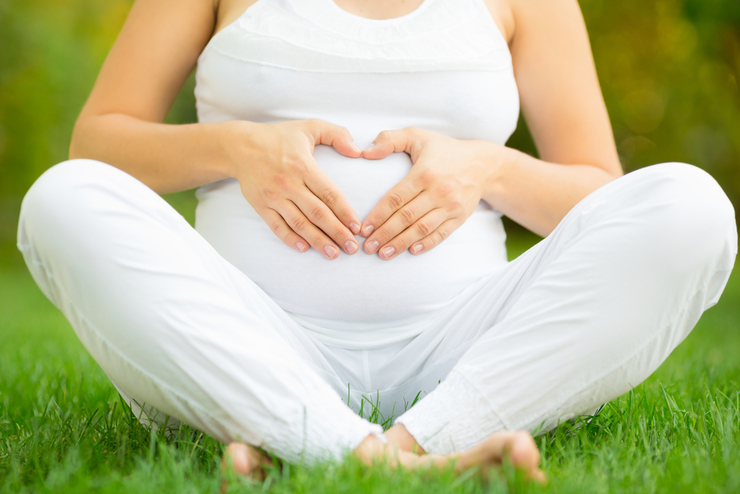Using the basal temperature method to promote fertility is safe.
Also, using the basal temperature method as a contraceptive does not pose any immediate risk; however, it does not offer protection against sexually transmitted infections and is one of the least effective natural family planning methods. Up to 1 in 4 women, maybe even more, who use fertility awareness-based methods to prevent pregnancy will become pregnant after a year of regular use.
Using the basal temperature method in conjunction with another fertility awareness-based method for contraception can improve the effectiveness. But the method requires motivation and diligence. If you don’t want to conceive a child, you and your partner should avoid having sex or use barrier birth control during your fertile days each month.
How to prepare
To keep track of your basal temperature, you don’t need any special preparation. However, if you want to use basal temperature in conjunction with another fertility awareness-based birth control method, consult your healthcare provider first if:
You recently gave birth or stopped taking birth control pills or other hormonal contraceptives
You are breastfeeding
You are approaching menopause
Keep in mind that basal temperature can be affected by several factors, including the following:
Illness or fever
Stress
Shift work
Sleeping excessively or interrupting sleep cycles
Alcohol
Different trips and time zones
Gynecological disorders
Certain medications
What you can expect
To use the basal temperature method:
Take your basal temperature every morning before you get out of bed. Use a digital oral thermometer or one specifically designed to measure basal temperature. Make sure you get at least three hours of sleep in a row every night for the reading to be correct.
For the most accurate results, always take your temperature using the same method. Try to take your temperature at the same time each day when you wake up.
Keep track of temperature readings. Record your basal temperature every day and look for a pattern. You can do it in a table made on paper or in an application designed for it.
When you are ovulating, your basal temperature may rise slightly, generally, less than half a degree F (0.3 ° C). Ovulation is likely to have occurred when the slightly higher temperature is stable for three days or more.
Plan sex carefully during your fertile days. The most fertile period is around two days before the rise in basal temperature, but sperm can live for up to five days in the reproductive tract.
If you want to get pregnant, this is the time to have sex. If you don’t want to get pregnant, you shouldn’t have unprotected sex from the start of your menstrual period until three to four days after your basal temperature rises every month.
Although there are numerous apps available for tracking menstrual cycles, only one is approved by the U.S. Food and Drug Administration (FDA) to prevent pregnancy.
Natural Cycles uses an algorithm to calculate the days of your cycle when you are most likely to be fertile. The app calculates your fertile days based on your daily temperature readings and other information you enter about your menstrual cycle.
When we feel bad, one of the first things we usually do is take our temperature to see if we have a fever. Fever is not a disease; it is our body’s defense mechanism against some alteration and a warning sign that something is not correct. Then…
When can we say that we have a fever?
The average body temperature is between 36 and 37 ºC. This interval is because there are several factors that can influence body temperature and its measurement:
The place on the body where the temperature measurement is made.
The time of day when the measurement is made (in the afternoon, it is usually higher).
Age.
Have done physical exercise for a specific time before taking the temperature.
Food intake.
Some medications
The menstruation.
It is considered that there is a fever when the body temperature is above 38ºC. In this case, the body may be responding to an abnormal situation: infections, trauma, or tumors, among others. For this reason, it is essential to monitor our temperature before any suspicion.
Where is body temperature measured?
We have already commented that the temperature can be taken at different points, and depending on where the measurements are taken, they may differ somewhat between them. In general, the axillary temperature is lower than the oral and rectal temperatures.
The parts of the body where the temperature is taken are:
Straight: it was recommended for babies and young children, although it may have some drawbacks. For example, the temperature in that area changes slowly concerning the internal temperature to give a high value when the feverish process has already begun to subside. In addition, this route should be avoided in cases of fissures, hemorrhoids, or injuries in the anal area.
Mouth: the oral cavity is easily accessible but has the disadvantage that its temperature varies with the ingestion of food or drink or even by breathing through the mouth. For this reason, it is recommended not to eat or drink anything hot or cold 15 minutes before taking your temperature. The thermometer is placed under the tongue and held with the lips. In young children, this route is not recommended.
Armpit: it is the easiest and most comfortable way to take the temperature and the least accurate. It can be used in babies and young children when the other ways are not possible.
Ear: The temperature of the eardrum can be determined using infrared thermometers. It is a fast and comfortable way, but it is not very precise. They are not usually recommended in babies or when there is otitis or earwax.
Forehead: also, with infrared thermometers, you can quickly find out the temperature. They are comfortable, but they are not very accurate either.

